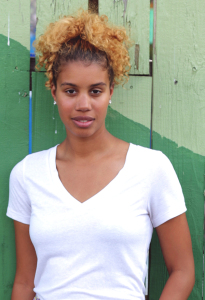
Print Managing Editor
Plopped down on the bleachers with a massive headache from all the poultry crowing, I starred at the numerous cages in front of me aligned in a row. The announcer counted down and the event began.
An energetic man was dancing around spastically, trying to get the chickens going. The audience gazed at him with looks just as perplexed as mine.
How in the heck do I write a story about this?
In the spring, there was an opportunity to participate in the first BSU Journalism at the Fair immersive learning course. I was eager to sign up and luckily received one of the last spots for the program.
Two weeks at the state fair sounds crazy, and it is. When I first started, I didn’t think I could produce a story every day for two weeks.
Each day, I reported to Colleen Steffen, a journalism instructor. She would ask “what’s your plan for today?” This often had me stuck because I didn’t always have a plan, and I had to think quickly on my feet.
Going out blind into the fairgrounds looking for a story, I found myself walking in circles for hours. I tried not to panic, but deep down I was worried. I was way out of my element when it came to piecing together a story so quickly.
I didn’t feel comfortable interrupting a stranger enjoying their time at the fair to ask questions. I thought every person I would attempt to approach would walk away or just say “no thanks.” I’m not a sales woman, I’m a journalist, and I want it to stay that way.
Even after I found the four sources required for each story, the pressure of meeting a deadline continued. As a magazine journalist, I am accustomed to taking my time writing a story, having days or weeks to complete my first draft.
But not this time.
We had strict deadlines. Like writing for a newspaper, the turnaround time was quick. Every day we were required to complete a first draft by 5 p.m.
I admit, and even my instructor noticed that I’m a slow writer. Perhaps I’m too focused on the quality, but honestly, sometimes I just procrastinate. I just didn’t think I could produce a high-quality feature piece, in less than five hours.
I would stare at my computer screen with a Word document open with a title and a byline, but no story. I would glance at my notes and flip through the pages, then stare back at the computer screen.
I started to panic.
I walked out of the trailer to calm myself down. I grabbed some greasy, curly fries with cheese: I needed time to clear my thoughts, and little snack always helps boost my focus. I felt more relaxed, and I was back in the game.
Then, the words just started flowing onto the document. My instructor was impressed with the effort I put forth, as she challenged me to work a little faster and faster.
We made final edits together, and she responded with a “good job, lady!” Hearing that made me smile and blush, because I was initially insecure about the speed of my story production.
When you alienate yourself to a particular style of writing, you limit your growth as a writer. These are the few years we have to explore different mediums, genres and styles, so don’t get stuck in your comfort zone. Push yourself to your breaking point and find out what it means to be out of your element.




